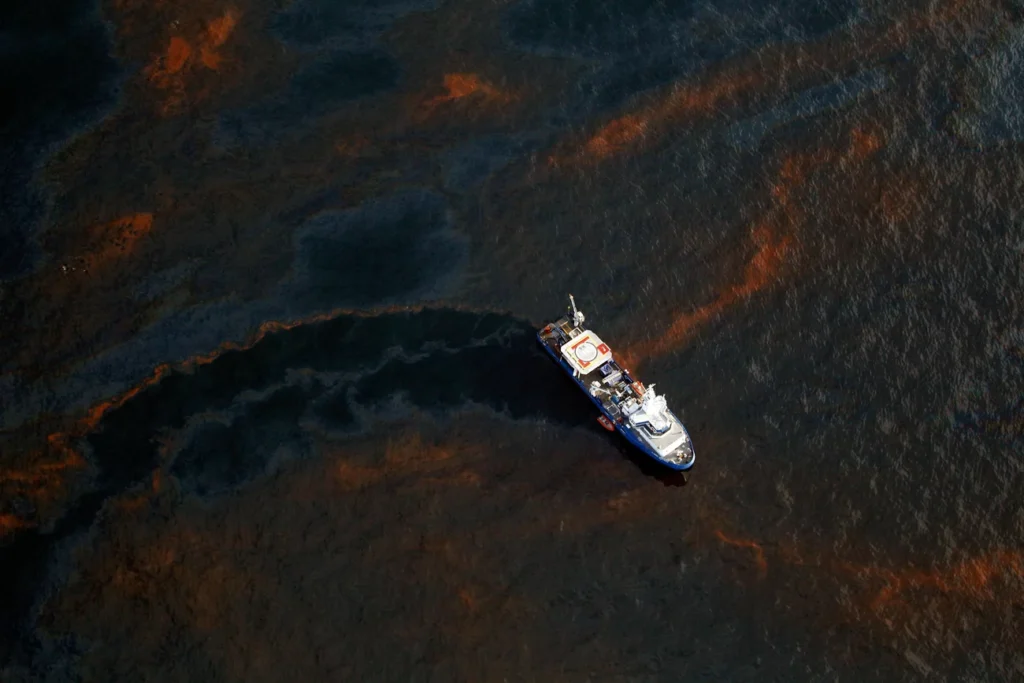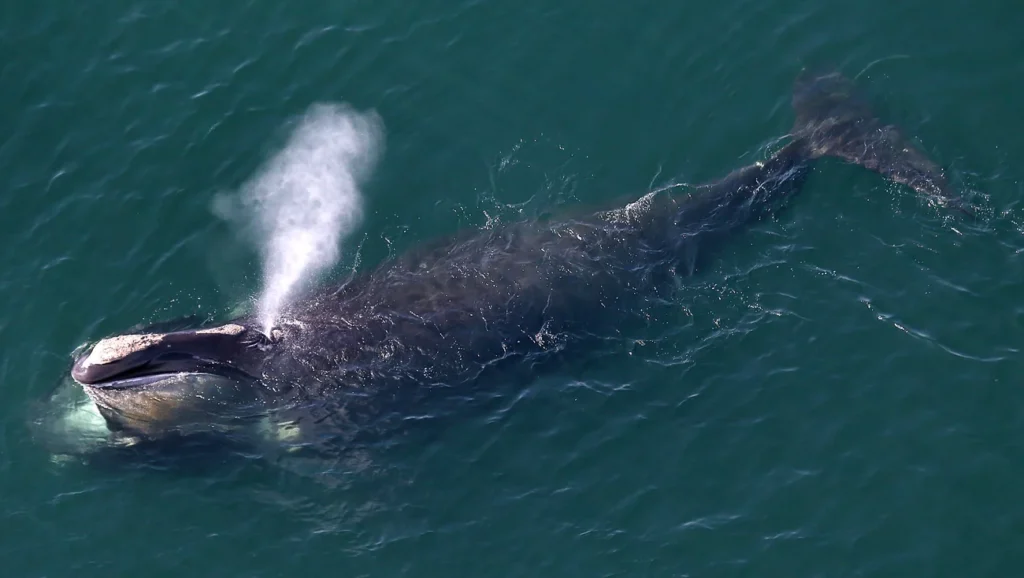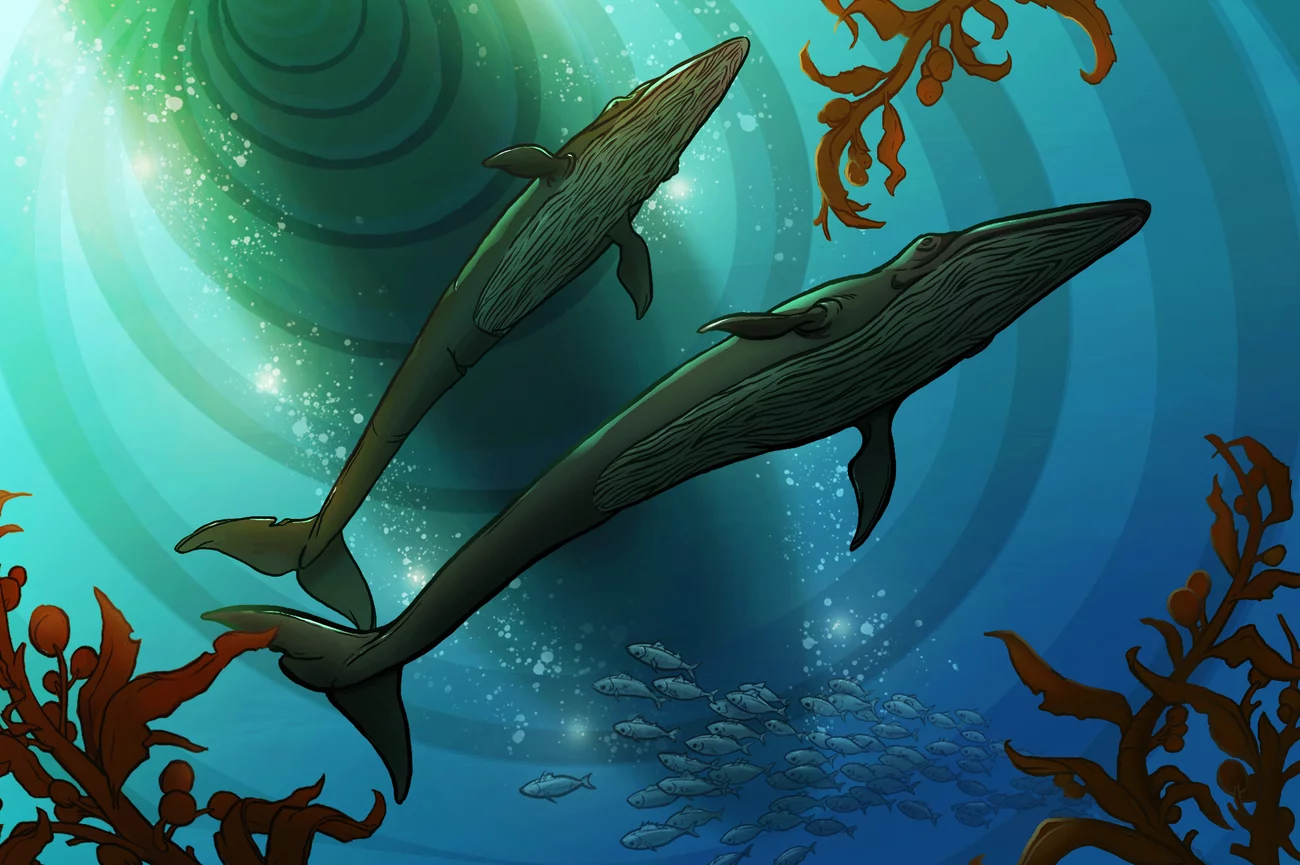Before encountering one of the Gulf of Mexico’s rarest mammals, two amateur fishermen already felt fortunate. Positioned 35 miles off the coast of Pensacola, Florida, at their favorite spot, they savored a couple of Miller Lites and hooked their third mahi-mahi when the unmistakable sound of air escaping a blowhole reached their ears.
“Then you start looking,” said Ben Renfroe, who quickly grabbed his phone to capture the moment. “Is that a dolphin or a whale?”
In the Gulf, dolphins are usually about the size of motorboats. But on that particular day, Renfroe witnessed something different – a mysterious figure in the water that seemed much larger than his 26-foot boat. A little later, the creature resurfaced, revealing a small fin and smoothly gliding over the waves like a submarine.
When experts reviewed the video on land, they concurred: it was likely a Rice’s whale, one of the rarest in the world, with only 51 left – all in the Gulf. To protect them, strict rules stipulate that not more than one whale can be harmed or killed by humans every 15 years.
These beautiful creatures face numerous dangers. The National Oceanic and Atmospheric Administration (NOAA) has listed more than 20 risks, including energy exploration, boats colliding with them, and underwater noise. Despite NOAA’s wealth of knowledge about these whales, they have been slow to enact rules and measures to keep the whales safe from the dangers posed by humans.
“The bureaucratic apparatus is slow to catch up,” remarked Aaron Rice, an ecologist studying the whales (not related to scientist Dale Rice, for whom they are named). “It raises this philosophical question of values, like, how much do we value these animals that live in U.S. waters?”
“Regrettable” delays for protections
On the fateful day of April 20, 2010, approximately 40 miles off the coast of Louisiana, tragedy unfolded as the BP drilling rig Deepwater Horizon burst into flames. In a harrowing span of two days, 11 lives were lost, and the rig descended beneath the waves. What remained was a well that would unleash over 200 million gallons of oil into the Gulf of Mexico over the following three months, etching its place as the largest marine oil spill in recorded history.
The Rice’s whales bore a disproportionate brunt of this environmental catastrophe. Almost one in five of these majestic creatures perished as the oil slick swallowed their habitat. Those that defied the odds and survived faced heightened risks of illness and complications during pregnancies. The toll on their population was severe, dwindling to fewer than 100 individuals.

A vessel navigates through crude oil spilled from the Deepwater Horizon wellhead near the coast of Louisiana.
The spotlight turned towards these whales after the oil spill catastrophe. Before the Deepwater Horizon disaster, these majestic creatures were mistakenly identified as a type of Bryde’s whale, found in various locations from South Africa to Japan. However, the aftermath of the tragedy led scientists from NOAA and other organizations to study bones washing ashore on Gulf shores and conduct genetic tests. To their astonishment, this wasn’t merely a subgroup; it was an entirely new species. The ones in the Gulf were believed to be the last of their kind on Earth.
This recently discovered great whale is not just new but also highly endangered, and intriguingly, it exists right in America’s own backyard.
“Every individual matters at that point,” said Jane Davenport, a senior attorney at Defenders of Wildlife, a conservation nonprofit. “Each one lost is another blow to their survival.”
The potential loss of this species implies forfeiting a vital contributor to the ocean’s productivity. These great whales play a crucial role by transferring nutrients from the seafloor to the surface and back with every dive. Moreover, they are instrumental in reducing carbon emissions. As these whales pass away, they sink approximately 33 tons of CO2, stored in their bodies throughout their lives, to the ocean floor—surpassing a tree’s annual carbon capture by over 1,000 times. The extinction of these whales would signify a significant indicator of an unhealthy Gulf ecosystem.
This situation also underscores the sluggish response of the U.S. in protecting these whales. Federal laws mandate the National Oceanic and Atmospheric Administration (NOAA) to promptly list a marine mammal as endangered when it’s shown to be at risk, using the best scientific data available. Within a year of listing, the agency must determine the necessary habitat for protection, providing special consideration for both the animals and their physical home when nearby projects that could harm them are proposed—a constant threat in the Gulf, where the majority of U.S. offshore oil and gas extraction occurs.
Despite the eventual listing of the whales as endangered, NOAA consistently misses deadlines. The agency still hasn’t designated the whales’ habitat, prompting conservation nonprofits to sue the agency multiple times since 2016 to ensure compliance with the law.
NOAA is also obligated to publish a recovery plan outlining how the government intends to help the Rice’s whale population return to healthy numbers. However, the agency has yet to accomplish this, only releasing an eight-page outline. Laura Engleby, the chief of NOAA’s marine mammal branch in the Southeast, acknowledges staff and resource limitations but emphasizes the agency’s ongoing efforts in restoration projects and outreach to raise awareness about the whales’ declining numbers. In November, a part of a skeleton contributing to the identification of Rice’s whales as a new species will be added to a public exhibit at the Smithsonian National Museum of Natural History in Washington, D.C.
Despite these efforts, Michael Jasny, a senior policy analyst for the Natural Resources Defense Council—one of the nonprofits taking legal action against the agency—deems the repeated delays as concerning.
“It’s an extraordinary case revealing the extent to which an agency will prolong action,” said Jasny. “And that is truly lamentable, considering the species at stake are on the brink of extinction.”
Whales remain under significant risk from vessel traffic.
In 2021, a coalition of environmental organizations, frustrated by the prolonged delays from NOAA, called on the agency to address an immediate threat to whales—ships. They advocated for a speed limit to protect the animals.
The Gulf ports, particularly Houston, are bustling centers, with the Port of Houston leading the nation in cargo exports. Since 2009, two Rice’s whales have suffered harm from ship collisions. Studies indicate that significant harm often results from fast-moving, large vessels.
The environmental groups suggested a mandatory speed reduction to 10 knots or less for ships exceeding 65 feet in a critical part of the eastern Gulf, where the whales reside. They also proposed a nighttime travel ban in this zone under Florida’s panhandle, considering that whales are less visible near the surface during those hours.

The concept of slowing down ship speeds to protect whales isn’t a groundbreaking one. The North Atlantic Right whale, with an estimated population of around 350 in the American and Canadian Atlantic, faces a similar endangerment. Along the U.S. East Coast, a 10-knot speed limit has been in place for over a decade, proving effective according to research.
“Vessel speed is the low-hanging fruit,” said Davenport, the lawyer for Defenders of Wildlife, one of the nonprofits that petitioned NOAA. “That is the most important thing that we can do right now.”
However, when NOAA sought public input on the proposal this summer, the energy and marine industries, along with politicians from states heavily reliant on these sectors, vehemently opposed it. In response, legislation was drafted against the proposed speed limit.
On August 18, Rep. Clay Higgins, R-La., introduced a House bill aiming to prevent NOAA from implementing the speed limit until the government could demonstrate that it wouldn’t adversely affect commerce. A Senate version of the bill was later presented by Sen. Bill Cassidy, R-La.
Cary Davis, the president of the American Association of Port Authorities, an advocacy group for the seaport industry, argued to NPR that imposing a speed limit for just a few Rice’s whales in the Gulf seemed impractical.
“It’s wildly overbroad and ill-conceived to force a blanket slow-down if there’s only so many of them,” Davis said. “And time is money, of course.”
After evaluating the feedback, on October 27, NOAA declared its decision. It rejected the speed limit petition put forth by the nonprofits.
In an official statement, the agency expressed the need to shift attention to other conservation priorities and outlined its intention to encourage vessel operators to voluntarily reduce their speed. However, in the absence of a mandatory limit, there remains a significant risk of ships causing harm to the whales throughout the Gulf.
NPR conducted an analysis of traffic data from over 6,000 ships measuring 65 feet and larger. The data, gathered from both land and satellite receivers, delineated the routes taken by the ships and their respective speeds as they traversed the 28,000-square-mile expanse designated as the proposed critical habitat for the whales in 2022.
Of all the voyages undertaken through the whales’ habitat last year, 80% involved vessels traveling at an average speed exceeding 10 knots. The absence of a regulatory limit implies that vessel speeds could persist as a substantial threat to the welfare of the whales.
